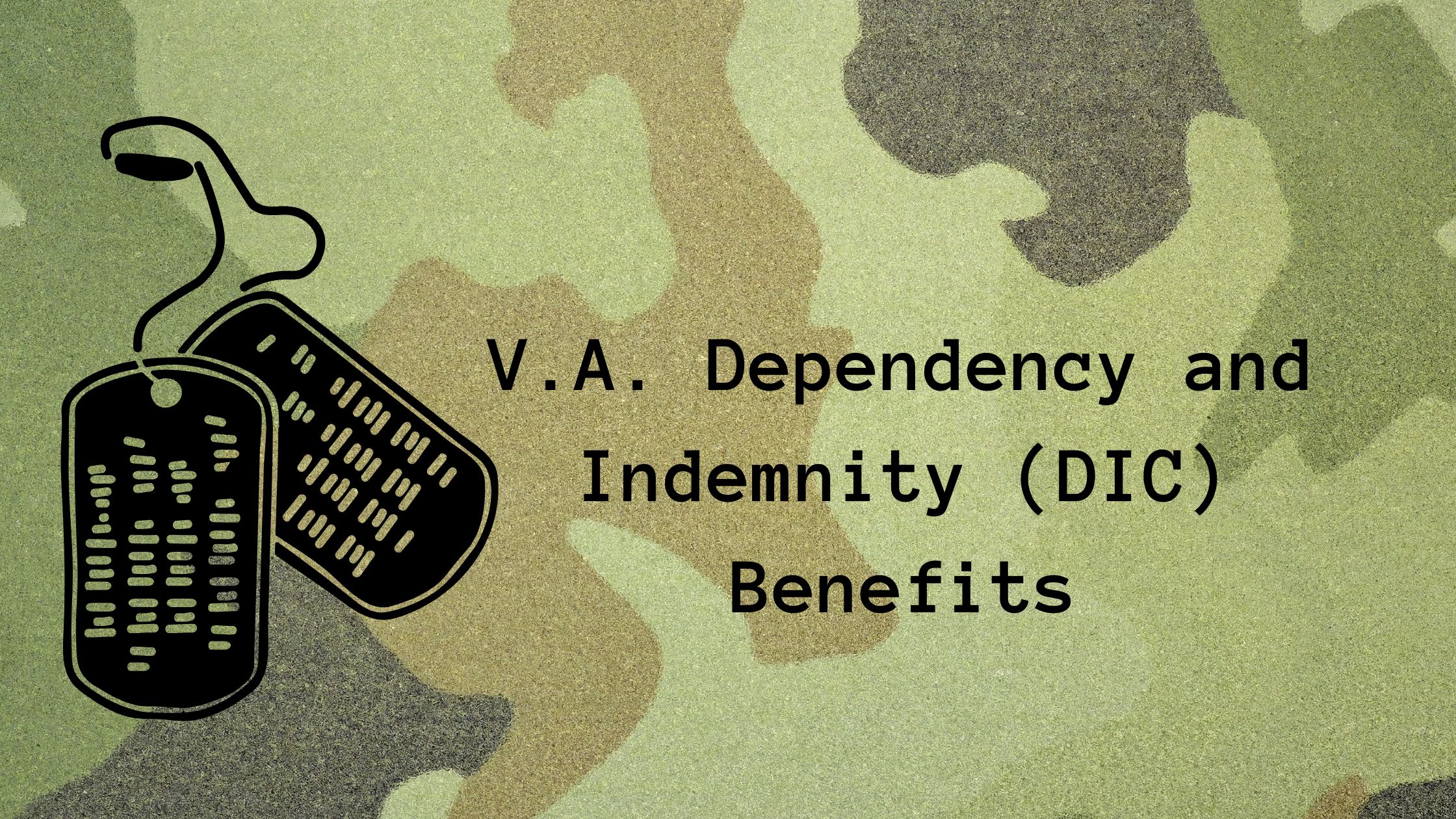VA DIC Benefit: Learn about VA Dependency and Indemnity Compensation survivor rates. A VA benefit for a surviving spouse, child, or parent. See if you’re eligible.
Survivor Rates for VA DIC Benefits: Dependency and Indemnity Compensation for Surviving Family Members
The VA Dependency and Indemnity Compensation (DIC) benefit is provided by the Department of Veterans Affairs to the surviving family members of deceased veterans. This benefit is designed to offer financial relief to those who have lost a loved one who served in the military if the veteran’s death was related to their service. The key features of DIC benefits include a monthly tax-free payment to eligible survivors. The amount is determined by the DIC rates, which are updated periodically to reflect changes in the cost of living and other economic factors. DIC benefits also include additional allowances for survivors with dependent children or those who require aid and attendance. These features are designed to provide comprehensive financial support to survivors, helping them manage the economic impact of losing a loved one who served in the military.
Check out our retirement timeline for US uniformed services members.
The VA Dependency and Indemnity Compensation (DIC) Benefit
VA Dependency and Indemnity Compensation is a tax-free monetary benefit paid to eligible survivors of service members who died in the line of duty or as a result of a service-connected disability. Unlike other VA benefits, DIC is specifically aimed at providing financial support to the surviving spouse, children, or parents of a deceased veteran. While many VA benefits focus on providing support to living veterans, such as disability compensation or healthcare services, DIC is exclusively for survivors. It is not contingent on the veteran having received a certain level of disability compensation during their lifetime. Instead, it is based on the veteran’s death being service-connected. This distinction is crucial, as it allows survivors to receive financial support so long as the deceased veteran didn’t receive a dishonorable discharge. If the veteran received compensation for a service-connected disability during their lifetime, survivors still may be able to get this monthly benefit.
Qualifications for DIC benefits: Surviving Spouse
Eligibility for DIC benefits is primarily determined by the relationship to the deceased veteran and the circumstances of their death. Surviving spouses, children, and sometimes parents could be eligible for DIC benefits. The veteran must have died during active duty, from a service-connected ailment, or under certain other conditions related to their military service. A surviving spouse must have been married to the veteran for at least one year before their death. For marriages less than one year, the surviving spouse must have had a child with the veteran, or been married to the veteran within 15 years of their discharge from the military time in which the qualifying injury happened. However, if the spouse remarries at an age younger than 55, they will no longer be eligible for this benefit.
Children and Parents Qualifications for DIC Benefits
For a surviving dependent child of a deceased veteran whose death was related to active military service, the following conditions must be met to qualify for DIC:
- Less than 18 years old (or 23 if attending school)
- Not Married
- Not included in the surviving spouse’s compensation benefit
For parents of military members with at least 90 days on active duty, they can only qualify if their annual earned income amount is below certain levels.
Survivor Rates for Parents: VA Dependency and Indemnity Compensation (DIC)
| Annual Income | Monthly DIC Benefit, 1 Parent | Monthly DIC Benefit, 2 Parents |
|---|---|---|
| $800 or less | $819 | $594 |
| $900 - $2000 | $723 - $651 | $586 - $498 |
| $2100 - $3000 | $715 - $643 | $490 - $418 |
| $3100 - $4000 | $635 - $563 | $410 - $338 |
| $4100 - $5000 | $555 - $483 | $330 - $258 |
| $5100 - $6000 | $475 - $403 | $250 - $178 |
| $6100 - $7000 | $395 - $323 | $170 - $98 |
| $7100 - $8000 | $315 - $243 | $90 - $18 |
| $8100 - $9000 | $235 - $163 | $10 - $5 |
| $8,162 | x | $5.04 |
| $9100 - $10,000 | $155 - $83 | x |
| $10,974 | $5.08 | x |
| Living with Spouse, $10,975 - $25,936 | $5 | x |
| Not living w/Spouse, $10,975 - $19,295 | $5 | x |
| $8163 - $19,295 | x | $5 |
Wartime Veterans: Eligibility for DIC in Event of Total Disability
A service-connected disability plays a crucial role in determining eligibility for DIC benefits. If the veteran’s death was directly related to a service-connected disability, their survivors are typically eligible for DIC benefits. This connection underscores the importance of the veteran’s service and the impact it had on their health and well-being. The benefit was mostly designed for those who died while on active duty, it can also be for veterans and their families if they experienced a total disability from a condition developed while on active duty. Requirements for DIC benefits in the event of a disability are as follows:
- Must have been totally disabled from condition for at least 10 years prior to death, or
- Since discharge from active duty and for at least 5 years immediately before their death, or
- For at least 1 year before their death if they were a former prisoner of war and passed away after September 30, 1999
How to Apply for VA DIC Benefits
Applying for VA DIC benefits involves several steps, including completing the necessary forms and providing supporting documentation. The process can be complex, but understanding the requirements and following the correct procedures can help ensure a successful application. The Department of Veterans Affairs provides resources and support to help survivors navigate the application process and access the benefits they are entitled to.
Application for DIC: VA Form 21P-534EZ
The VA Form 21P-534EZ is the primary application form for DIC benefits. This form is used to apply for DIC, survivors pension, and accrued benefits. It is designed to streamline the application process and ensure that all necessary information is provided. Completing this form accurately and thoroughly is essential for a successful application, as it provides the Department of Veterans Affairs with the information needed to determine eligibility and calculate benefits.
File Form Before You Apply for DIC benefits
Submitting an intent to file form is an important step in the application process for DIC benefits. This form notifies the Department of Veterans Affairs of the survivor’s intention to apply for benefits, allowing them to preserve the effective date of the claim. This can be crucial in ensuring that survivors receive the maximum benefits they are entitled to. The intent to file form can be submitted online, by mail, or in person at a VA office. Want to submit an intent to apply? Meet with a Federal Benefits expert.
Documents Needed for the VA Application for DIC
Several documents are required when applying for DIC benefits. These include the veteran’s death certificate, proof of the relationship to the deceased veteran, and any relevant military service records – including when the veteran entered active duty service. Additional documentation may be needed to establish the service-connected nature of the veteran’s death or to demonstrate eligibility for additional allowances. Providing complete and accurate documentation is essential for a successful application, as it allows the Department of Veterans Affairs to verify the information and process the claim efficiently.
What are the Current DIC Rates and How are They Determined?
The current DIC rates are determined by the Department of Veterans Affairs and are subject to periodic updates. These rates are designed to provide adequate financial support to survivors, taking into account changes in the cost of living and other economic factors. DIC rates are typically updated annually to reflect changes in the cost of living. These updates are based on certain limits set by Congress and are designed to ensure that the benefits keep pace with inflation and other economic changes. The updated rates are published by the Department of Veterans Affairs and are used to calculate the monthly payments received by eligible survivors.
DIC Rate Calculation and Determining Factors
Several factors influence the DIC rates, including changes in the cost of living, legislative adjustments, and economic conditions. The Department of Veterans Affairs considers these factors when determining the rates, ensuring that the benefits provide adequate financial support to survivors. Additionally, the rates are influenced by the veteran’s rank, length of service, and any additional allowances for dependents or special circumstances. Calculating DIC benefits for survivors involves understanding the current rates and any additional allowances that may apply. The basic monthly rate is determined by the Department of Veterans Affairs, but additional amounts may be added for dependents, aid and attendance, or other special circumstances. Survivors can work with an accredited attorney, use the VA’s online resources, or consult with a VA representative to calculate their specific benefits and ensure they receive the correct amount.
What Additional Benefits are Available for Survivors?
In addition to DIC benefits, survivors may be eligible for other forms of support from the Department of Veterans Affairs and the Veterans Service Organization. There might also be TSP benefits for survivors or a survivorship benefit from the veteran’s military retirement pension.
What is the Survivors Pension?
The Survivors Pension is a needs-based benefit available to low-income surviving spouses and children of deceased veterans. This benefit provides financial support to those who meet certain income and asset limits, ensuring that they have the resources needed to maintain a basic standard of living. The Survivors Pension is separate from DIC benefits and is based on the veteran’s wartime service and the survivor’s financial need.
Check out our TSP calculator to estimate investment income.
Burial Benefits for Veterans who Served on Active Duty
Burial benefits are available to help cover the costs associated with the funeral and burial of a deceased veteran. These benefits may include a burial allowance, a plot allowance, and reimbursement for transportation costs. The Department of Veterans Affairs provides these benefits to honor the service of the veteran and to assist the family with the financial burden of burial expenses.
How to Access Additional DIC Benefits
Accessing additional DIC benefits involves understanding the eligibility criteria and application processes for each benefit. Survivors can consult with a VA representative or use the VA’s online resources to learn more about the benefits available to them and how to apply. By taking advantage of these additional benefits, survivors can ensure they receive the full support they are entitled to, helping them manage the financial impact of losing a loved one who served in the military.
Reach Out to Us!
If you have additional federal benefit questions, contact our team of CERTIFIED FINANCIAL PLANNER™ (CFP®), Chartered Federal Employee Benefits Consultants (ChFEBC℠), and Accredited Investment Fiduciaries (AIF®). At PlanWell, we are federal employee financial advisors with a focus on retirement planning. Learn more about our process designed for the career fed.
Preparing for federal retirement? Check out our scheduled federal retirement workshops. Sign up for our no-cost federal retirement webinars through this link! Make sure to plan ahead and reserve your seat for our FERS webinar, held every three weeks. Want to have PlanWell host a federal retirement seminar for your agency? Reach out, and we’ll collaborate with HR to arrange an on-site FERS seminar.
Want to fast-track your federal retirement plan? Skip the FERS webinar and start a one-on-one conversation with a ChFEBC today. You can schedule a one-on-one meeting by clicking here.










